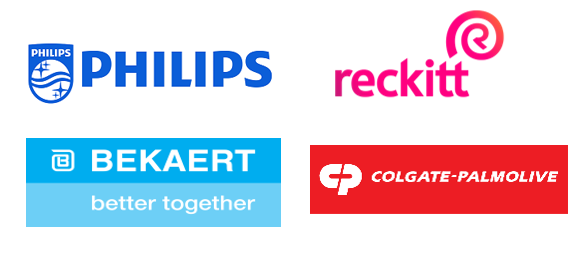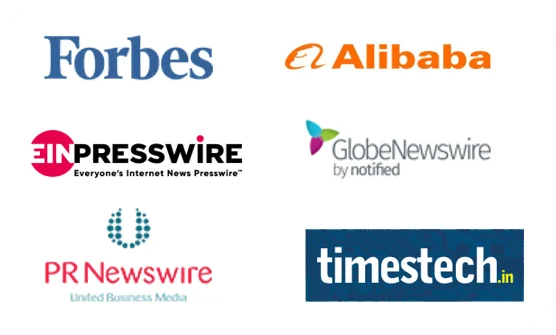Market Overview:
"The global foldable smart TV market was valued at US$ 1,672.0 Million in 2024 and is expected to register a CAGR of 18.1% over the forecast period and reach US$ 7,472.8 Million in 2033."
|
Report Attributes |
Details |
|
Base Year |
2024 |
|
Forecast Years |
2025-2033 |
|
Historical Years |
2021-2023 |
|
Foldable Smart Market Growth Rate (2025-2033) |
18.1% |
Foldable Smart TVs are cutting-edge innovations that combine the benefits of large-screen televisions with the portability of foldable technology. These TVs offer the convenience of a compact form factor while delivering immersive viewing experiences. With OLED or QLED panels, they provide vibrant colors and high resolution. Foldable Smart TVs enable versatile placement, transforming from a standard TV to a larger display for cinematic experiences. In the market, there are two main types: horizontally folding TVs, which expand horizontally for a wider view, and vertically folding TVs, which unfold to reveal a larger screen area. These products redefine home entertainment by blending technology and design.
The global foldable smart TV market is registering steady growth, driven by rising consumer demand for innovative entertainment solutions. Rapid urbanization and evolving lifestyles also contribute to increased consumption. These TVs offer versatile services, transitioning from compact screens to expansive displays for immersive viewing.
Technological advancements, including flexible OLED and QLED panels, enhance picture quality. Industry players are focusing on eco-friendly initiatives and energy efficiency. Advantages of foldable TVs include space-saving designs and enhanced portability.
Foldable Smart Market Trends and Drivers:
Technological Advancements: Continuous improvements in display technology, such as flexible OLED and QLED panels, result in enhanced picture quality, vibrant colors, and higher resolution, driving consumer interest and willingness to invest in foldable smart TVs.
Innovative Design: The unique foldable design offers versatility, allowing these TVs to function both as compact screens and larger displays for immersive experiences. This design innovation appeals to consumers seeking space-efficient solutions without compromising on screen size.
Changing Lifestyles: Urbanization and evolving lifestyles lead to smaller living spaces. Foldable smart TVs cater to this trend by providing a dynamic entertainment solution that optimizes space utilization, making them attractive options for urban dwellers.
Premium Experience: The larger screen area when unfolded provides a cinematic experience at home, attracting consumers who value high-quality entertainment and prefer the convenience of watching movies and shows on a big screen without the need for a dedicated home theater.
Portability and Placement Flexibility: Foldable TVs can be transformed from a compact form to a larger screen, and this enables easy relocation and placement in various settings, thereby catering to varying consumer preferences and making the product more adaptable in different home setups.
Strategic Marketing and Partnerships: Efforts by manufacturers to collaborate with content providers, streaming platforms, and tech giants result in bundled offerings, exclusive content, and tailored services that incentivize consumers to opt for foldable smart TVs. Ability to leverage these options and features is expected to further support demand and drive market revenue growth.
Foldable Smart Market Restraints:
High Cost: The innovative technology and premium features of foldable smart TVs contribute to their higher price point, limiting their accessibility to a broader consumer base and potentially deterring potential buyers.
Durability Concerns: The foldable mechanism may raise concerns about long-term durability and potential wear and tear, leading to consumer hesitation and affecting market adoption.
Limited Content Optimization: Not all content is optimized for foldable screen dimensions, which could result in a compromised viewing experience and hinder the perceived value of these TVs.
Market Awareness: Lack of awareness and understanding about foldable smart TVs among consumers may slow down adoption, as potential buyers might be unfamiliar with the benefits and features offered.
Complexity and Learning Curve: Foldable TV's transformational design might require users to adjust to new usage patterns and learn how to handle the foldable mechanism, which could be perceived as a barrier to entry.
Competing Technologies: Established TV technologies, such as 4K and 8K displays, offer high-quality viewing experiences without the complexity of a foldable design. These alternatives could divert consumer attention and impact foldable TV market growth.
Foldable Smart Market Opportunities:
Premium Pricing and Profit Margins: Companies can capitalize on the unique design and advanced technology of foldable smart TVs to command premium pricing, leading to higher profit margins compared to traditional TVs.
Diversified Product Portfolio: Offering a range of foldable TV models with varying screen sizes, features, and price points allows companies to cater to a wider consumer base and capture different market segments.
Content Partnerships: Collaborating with streaming platforms and content providers to optimize content for foldable screens can create exclusive offerings, attracting customers with enhanced viewing experiences and driving subscription revenues.
Accessories and Add-Ons: Developing and marketing accessories such as wall mounts, stands, and protective covers tailored for foldable TVs can create additional revenue streams while enhancing the overall user experience.
Extended Warranties and Service Plans: Providing extended warranties and service plans specific to foldable TVs can instill consumer confidence in the product's durability and reliability, generating ongoing revenue from after-sales services.
Customization and Personalization: Offering customization options, such as color choices, design variations, and even personalized content recommendations, can engage consumers and encourage them to invest in a tailored foldable TV experience.
Foldable Smart Market Segmentation:
By Screen Technology:
- OLED Panels
- QLED Panels
By Screen Size:
- Small (Below 40 inches)
- Medium (40-60 inches)
- Large (Above 60 inches)
By Application:
- Residential
- Commercial (Hotels, Restaurants, etc.)
By Distribution Channel:
- Online Retail
- Offline Retail (Electronics Stores, Hypermarkets, etc.)
Foldable Smart Market, By Region:
North America:
- United States
- Canada
Europe:
- Germany
- The U.K.
- France
- Spain
- Italy
- Russia
- Poland
- BENELUX
- NORDIC
- Rest of Europe
Asia Pacific:
- China
- Japan
- India
- South Korea
- ASEAN
- Australia & New Zealand
- Rest of Asia Pacific
Latin America:
- Brazil
- Mexico
- Argentina
Middle East & Africa:
- Saudi Arabia
- South Africa
- United Arab Emirates
- Israel
Regional analysis of the global foldable smart TV market enables highlighting of key regions and countries that stand out with significant potential. North America, Europe, and Asia-Pacific lead in terms of product sales and demand, driven by technological advancements, higher disposable income among consumers, and urbanization. The United States, Germany, and South Korea are at the forefront due to robust R&D and consumer adoption. Asia-Pacific's expanding middle class and tech-savvy population contribute to a strong market outlook. Preference for foldable TVs is influenced by region-specific developments, with North America emphasizing premium features, Europe valuing design aesthetics, and Asia-Pacific favoring innovative, space-saving solutions.
Investing in China and India is paramount to driving the growth of the global foldable smart TV market due to factors such as expanding consumer bases in both countries, supported by increasing disposable incomes and a growing middle class consumer base, Also, demand for more innovative entertainment technologies and products like foldable smart TVs is gaining traction. As urbanization reshapes living spaces and modern lifestyles, the space-efficient nature of foldable TVs becomes particularly relevant, catering to the spatial constraints of urban dwellings.
Leading Companies in Foldable Smart TV Market & Competitive Landscape:
The competitive landscape of the global foldable smart TV market is characterized by a blend of established players and emerging contenders striving to capitalize on the growing demand for innovative home entertainment solutions. Industry leaders such as Samsung, LG and Sony hold substantial market shares due to their brand recognition, technological prowess, and extensive distribution networks. These giants leverage their R&D capabilities to introduce cutting-edge foldable smart TV models, setting industry benchmarks in terms of display quality, design, and user experience.
Emerging companies such as TCL, Hisense, and Xiaomi are making strategic inroads into the foldable smart TV segment. These players focus on offering competitive pricing and disruptive technologies, often attracting price-conscious consumers seeking value without compromising on features. Their agility allows them to swiftly adapt to market trends and consumer demands.
Moreover, regional players like Haier in China and Vestel in Europe play a vital role in capturing local markets. These companies possess a deep understanding of regional preferences and can tailor their offerings accordingly. Collaborations with content providers and partnerships with technology providers further enhance their competitive edge.
Company List:
- Samsung Electronics Co., Ltd.
- LG Electronics Inc.
- Sony Corporation
- TCL Electronics Holdings Limited
- Hisense Group
- Xiaomi Corporation
- Panasonic Corporation
- Vizio Inc.
- Sharp Corporation
- Philips (TP Vision)
- Skyworth Group
- Haier Group Corporation
- Vestel Group
- Bang & Olufsen A/S
- Koninklijke Philips N.V. (Philips)
Research Scope
|
Report Metric |
Report Details |
|
Foldable Smart Market size available for the years |
2021-2033 |
|
Base Year |
2024 |
|
Forecast Period |
2025-2033 |
|
Segment covered |
By Screen Technology, Screen Size, Application, Distribution Channel, and Region |
|
Regions Covered |
North America: The U.S. & Canada Latin America: Brazil, Mexico, Argentina, & Rest of Latin America Asia Pacific: China, India, Japan, Australia & New Zealand, ASEAN, & Rest of Asia Pacific Europe: Germany, The U.K., France, Spain, Italy, Russia, Poland, BENELUX, NORDIC, & Rest of Europe The Middle East & Africa: Saudi Arabia, United Arab Emirates, South Africa, Egypt, Israel, and Rest of MEA |
|
Fastest Growing Market in Europe |
Germany |
|
Largest Market |
North America |
|
Key Players |
Samsung Electronics Co., Ltd., LG Electronics Inc., Sony Corporation, TCL Electronics Holdings Limited, Hisense Group, Xiaomi Corporation, Panasonic Corporation, Vizio Inc., Sharp Corporation, Philips (TP Vision), Skyworth Group, Haier Group Corporation, Vestel Group, Bang & Olufsen A/S, Koninklijke Philips N.V. (Philips) |
Frequently Asked Question
What are the key screen technologies driving preference for foldable smart TVs?
Global foldable smart TV market growth is primarily driven by high preference for two key screen technologies: OLED (Organic Light Emitting Diode) Panels and QLED (Quantum Dot Light Emitting Diode) Panels. These advanced display technologies offer improved picture quality, color accuracy, and contrast, enhancing the viewing experience for consumers.
How is the foldable smart TV market segmented based on screen size?
The market is segmented based on screen size into three categories: Small (below 40 inches), Medium (40-60 inches), and Large (above 60 inches). This segmentation caters to different consumer preferences and living space constraints, offering options suitable for various environments.
What are the primary applications of foldable smart TVs?
Foldable Smart TVs find applications in both residential and commercial settings. In residential environments, they serve as innovative home entertainment solutions. In the commercial sector, they are utilized in hotels, restaurants, and other establishments to provide immersive viewing experiences for customers.
Which distribution channels contribute to the sales of foldable smart TVs?
The distribution channels for foldable smart TVs encompass both online and offline retail avenues. Online retail platforms offer convenience and a wide product range, while offline retail includes electronics stores, hypermarkets, and other physical retail locations.
What features can consumers expect from foldable smart TVs?
Foldable smart TVs come with a range of features catering to modern entertainment needs. These include connectivity features such as smart functionalities and internet apps, enhanced audio systems with built-in sound technology, and foldable mechanisms that allow screens to be adjusted horizontally or vertically, offering versatility in usage scenarios.

